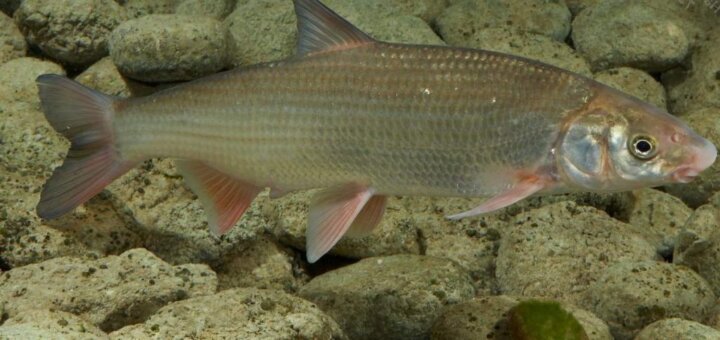Contents
A typical river fish that avoids standing water. Podust can reach a length of 40 cm and a weight of up to 1.6 kg. A schooling fish that prefers a bottom-dwelling lifestyle. Podust, despite its size, is considered a worthy trophy. Fishing for this fish requires effort and experience. Podust, in Russia, has two species and several subspecies.
Methods for catching podust
The most popular way to catch podust is float fishing “in wiring”. Given the benthic lifestyle, the fish react to bottom gear. In addition, podust is caught on spinning lures.
Podust fishing with float tackle
The main way to catch podust is considered to be fishing “in wiring”. The rig should be adjusted so that the nozzle moves as close to the bottom as possible. For successful fishing, you need a large amount of bait. Some anglers, in order to make fishing more efficient, recommend feeding bait to the fishing point in a mesh bag or stocking. For fishing, traditional float fishing tackle is used. Perhaps, during fishing, you will have to change the type of bait several times. Therefore, it is recommended to have a set of leashes with different hooks.
Podust fishing on bottom gear
The podust is distinguished by its rapid attack of the lure. Anglers often do not have time to hook the fish. Therefore bottom rig fishing is less popular for catching this fish. With a certain skill, fishing on bottom gear can become no less successful, as well as “in wiring”. Feeder and picker fishing is very convenient for most, even inexperienced anglers. They allow the fisherman to be quite mobile on the pond, and because of the possibility of point feeding, quickly “collect” fish in a given place. Feeder and picker, as separate types of equipment, currently differ only in the length of the rod. The basis is the presence of a bait container-sinker (feeder) and interchangeable tips on the rod. The tops change depending on the fishing conditions and the weight of the feeder used. Various worms, maggots, bloodworms and so on can serve as a nozzle for fishing. This method of fishing is available to everyone. Tackle is not demanding for additional accessories and specialized equipment. This allows you to fish in almost any water bodies. It is worth paying attention to the choice of feeders in shape and size, as well as bait mixtures. This is due to the conditions of the reservoir (river, pond, etc.) and the food preferences of local fish.
Podust fishing on spinning
To catch podust on spinning, you need to use ultra-light rods and lures. Spinning rod test up to 5g. With spinning, it is better to look for podust on small rivers with a lot of rifts and rapids. Light tackle and a walk along the picturesque river will bring a lot of positive emotions to any fisherman.
Baits
The basis of the success of fishing for podust is bait. On float and bottom fishing rods, animal baits are caught, most often on a worm. But it is better to have, in the arsenal, various baits, including those of vegetable origin. In feed mixtures, bait of animal origin is also added. Especially, it is recommended to add some of the larvae to the feed when fishing for maggots. For spinning fishing, the smallest microwobblers, lures and fly lures with a petal size according to the Mepps classification – 00 are used; 0, and weighing about 1 gr. Podust can stick in deep places, so it is sometimes better to use silicone micro jig baits.
Places of fishing and habitat
In Russia, podusta can be caught in the rivers of the European part. Podust prefers fast clean rivers with a rocky bottom. Most often, it keeps at shallow depths up to 1.5 m. On larger, but shallow reservoirs, it will keep a channel trough, away from the coast. It feeds on shallow peals with a lot of vegetation.
Spawning
Podust becomes sexually mature at 3-5 years. Spawns on rocky ground in April.










